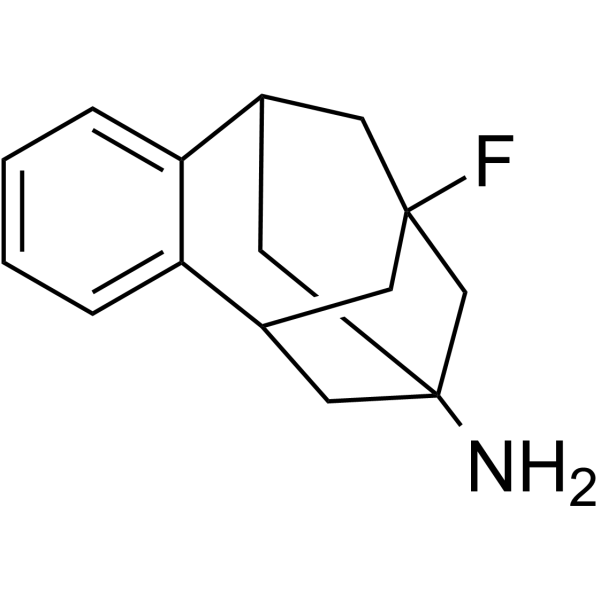| Description |
NMDA receptor antagonist 4 (IIc) is a uncompetitive, voltage-dependent, orally active NMDAR blocker, with an IC50 of 1.93 µM. NMDA receptor antagonist 4 shows a positive predicted blood-brain-barrier (BBB) permeability, and can be studied in Alzheimer's disease[1].
|
| Related Catalog |
|
| Target |
IC50: 1.93 µM (NMDAR)[1]
|
| In Vitro |
NMDA receptor antagonist 4 (IIc) shows competitive interaction with endogenous blocker Mg2+, and shows dependence on membrane potential in the NMDAR channel[1]. NMDA receptor antagonist 4 shows high metabolic stability in human and mice liver microsomes, and shows hERG safety, without obvious cytotoxicity[1]. Cell Cytotoxicity Assay[1] Cell Line: Neuro2A cells Concentration: 1, 10, and 100 µM Incubation Time: 24 h Result: Did not show cytotoxic at the highest concentration tested (100 µM).
|
| In Vivo |
NMDA receptor antagonist 4 (IIc) (0-10 µM) rescues the motor deficits, and protects against Aβ toxicity-related neuronal dysfunction[1]. NMDA receptor antagonist 4 (5 mg/kg/day; p.o.; 4 weeks) improves cell survival and synaptic function in AD through increasing the activity of cell-survival signaling pathways (Fyn-GluN2B-CREB signaling) and preventing internalization of synaptic NMDARs[1]. Animal Model: C. elegans (N2 wild-type, CL2006, CL2122, CL2355)[1] Dosage: 0, 0.1, 0.5, 1.5, and 10 µM Administration: Result: Reduced defective locomotion in CL2006 nematodes. Significantly reversed the chemotaxis behavior of CL2355 nematodes disrupted by Aβ expression. Animal Model: Six months old female 5XFAD mice[1] Dosage: 5 mg/kg/day Administration: Oral administration, 4 weeks Result: Enhanced working memory function. Rescued the expression of GluN2A and postsynaptic density protein (PSD) 95. Increased Fyn phosphorylated levels and correspondingly elevated GluN2B phosphorylation at Tyr1472. Significantly increased p-CREB protein levels in the nucleus. Reverted calbindin D-28K protein levels.
|
| References |
[1]. Andreea L. Turcu, et al. Design, synthesis, and in vitro and in vivo characterization of new memantine analogs for Alzheimer's disease. Eur J Med Chem. 2022 Apr 8;236:114354.
|
